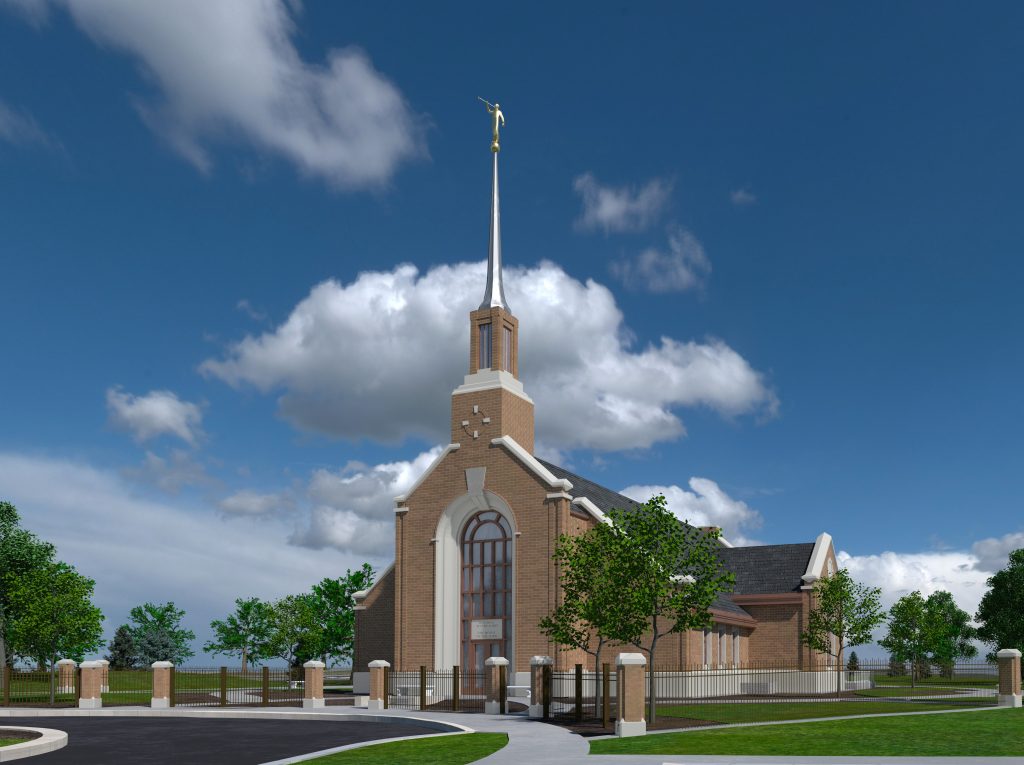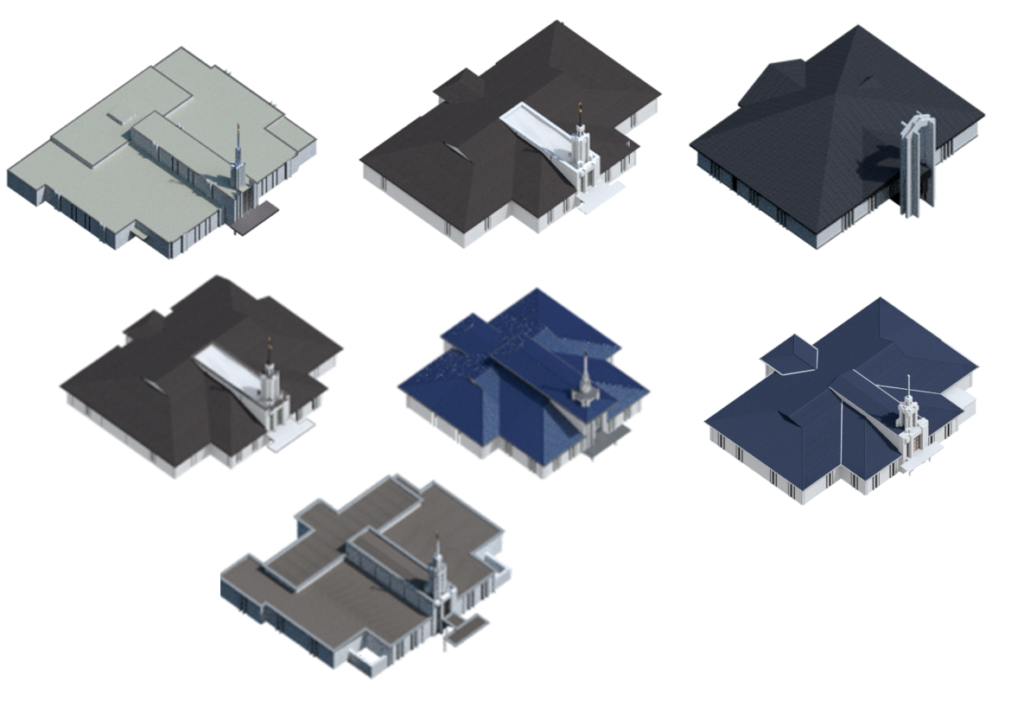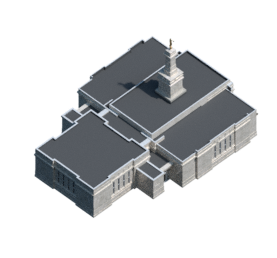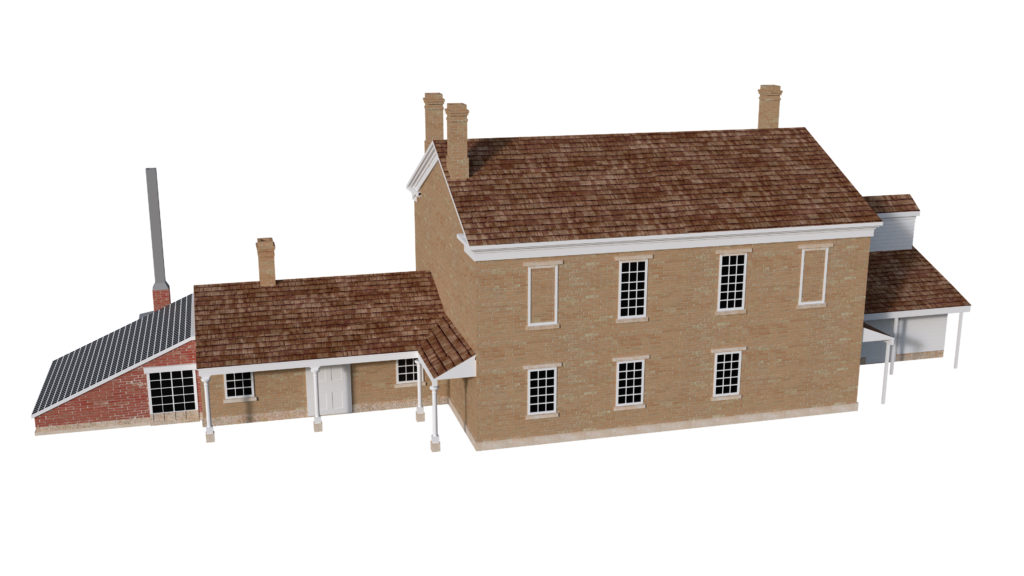I have had many conversations lately, online, in the hallways at Church, in my front yard or living room with friends, about changes in the Church. Most of these conversations focus around the changes to ministering and the structure of the Elder’s Quorum, and move on to talk about rumors of changes that might come in October Conference. Almost everyone says they have heard that the changes which have happened are nothing compared to that which is to come, and most of them want to know what I have heard about changes to temples or the temple program.
The Answer is, Not much.
But many people appear to believe such a change is coming.
I have had many thoughts over the last six to 12 months that I thought I might share. These thoughts have grown into sharper focus with the news that President Nelson shared a new, changed render for the Winnipeg Temple while in Canada last month. This design shared what appears to be a temple of nearly the same design, but with brick instead of stone exterior. This change to what is likely a more cost effective material seems to add some weight to one of my thoughts.

I want to make it clear, again, that these are just my thoughts, and may bear no relation to reality!
In 1856, 3 years after the groundbreaking for the Salt Lake Temple Brigham Young made a remark that I love so much it is now on the home page of this site. Said he,
“To accomplish this work there will have to be not only one temple, but thousands of them, and thousands and tens of thousands of men and women will go into those temples and officiate for people who have lived as far back as the Lord shall reveal.” — Brigham Young, June 22, 1856
There are many things I love about this quote, not the least of which is the thought that for a large portion of the human race, the only way we will ever be able to get the information we need to be able to perform temple work for them, is when they sit across the table from us (so to speak) and give us the details themselves. But the one that my mind has stressed over, struggled over, and finally come to peace with, is the part about needing thousands of temples.
Currently, we are just on the verge of having 160 temples. 160 temples in 188 years of Church operation. That is an average of us completing 85% of one temple for every year the Church has been in operation. Considering that just 10 years ago we only had about 50 temples, that is a massive jump in a decade. It is also no where near 1,000, let alone “thousands.” In the last couple of years we have dedicated at a rate much faster than a portion of one temple per year. 2 temples by the end of this year, 4 temples last year, 6 the year before that, and 5 in 2015.
So, let’s be a little generous and call it 5 per year on average.
To reach the first 1,000 temples, we need another 840 temples. At a rate of 5 per year we would need another 168 years. Let’s say, though, that we go for another burst of temple building in the style of President Hinckley, and we do another 40 or so in the next 2 years. That takes us down to needing 800 more instead, and that reduces the time by, well, only 8 years. We still need 160 years to build enough to reach the first 1,000.
In my mind, I have always assumed that the millennium would probably start before then. I’m probably wrong, but let’s say I’m not. Let’s also say that before the millennium starts we need not just the first 1,000, but the second, 1,000 as well. For some reason. So now we need to build 1,840 temples in about 160 years. Surprisingly, that’s only 11.5 temples per year.
Temples are expensive. The Church used to publish such things as cost in the Ensign or the Church News, but I can’t find any record of them doing that since the Provo and Ogden Temples were built. At that time, an Ensign article lists the cost of each of those two temples at about $4,000,000 apiece. Adjusted for inflation, according to the internet, that’s over $24,000,000 in today’s market. And both of those temples were built in the most economical manner possible for the time they were built, meaning temples today are much more expensive. (The LA Times claims that the San Diego Temple cost 24 Million to build in 1993, over $41,000,000 when adjusted for inflation.) But for the sake of a point, to build 11 temples per year at 25 million dollars each, would cost over $275,000,00 per year, likely more (maybe even more than twice as much) for the temples we have been building of late.
The Church has the ability to take on the financial burdens of large scale building projects, but it also has a charge and commission to be wise and frugal in the spending of the tithes of the members. While I cannot say that the Church definitely has the ability to spend that much or more on temple construction every year for 160 consecutive years, I can say that to me it does not seem like wisdom to do so. Especially when you consider that a temple is not the marble and velvet and fine things we put in it. It is, instead, a place, simple or grand, dedicated as a House of the Lord for the conducting of the Ordinances of Salvation. Be that a palace or a tent in the wilderness.
So, how could we get to not just the first but the second 1,000 temples more quickly? I can think of a couple of methods.
Convert Existing Buildings

The first method I hear people talk about is to convert existing buildings. Any building with a font can easily become a temple. The font does not even need to have oxen under it. Apia, Atlanta, Freiberg, Nuku’alofoa, Papeete, Santiago and Sydney temples were all dedicated with a font that was a tile lined tub in the ground, just like any existing Stake Center. (Each temple has been remodeled since, and a larger font with Oxen has been added, but each temple operated for 15-25 years without sculpted oxen.) So, any Stake Center could become a temple. The end result would be in a matter of weeks you could rededicate Stake Centers as Temples.
And chaos would result throughout the Church. Each Stake Center currently houses facilities for weekly and Sunday meetings for at least one Stake, and between one and four wards. Each of these wards, serving the needs of an average of about 300 people, and Stakes, serving 4-10 wards, would need to be accommodated elsewhere, in other buildings. In one stake locally, there are 6 wards in the Stake, and only 2 buildings in the whole of the Stake boundaries. So do you put all six wards meeting in one building? What if we changed to a 2 hour Sunday Schedule? First ward would start at 9 AM, last one could start as late as 3 PM. It would be chaotic, but it could potentially be doable.
Build Temples More Frugally
This one would cost more than the first, as you are building new structures, but in my mind, it is the one that would be most likely to happen. Especially with the changes to the design of the Winnipeg Manitoba Temple. A Temple, again, does not need to be finery and marble and expensive. It needs to be tasteful, functional, quiet and contemplative. To that end, building new temples, the size of Chapels, and as cost efficient as Chapels would allow a construction pace of hundreds of Temples per year. Using standard floorplans, with a set number of exterior designs, and a set number of exterior materials could allow multiple unique looking temples from a single plan. Just changing the design of the Manitoba temple from stone with a copper spire to brick with a tin spire creates 2 unique looking designs. Even President Hinckley’s small temple designs would look less cookie cutter with some exterior variation, and the cost would not go up much as a result. Depending on the material chosen, say brick instead of cut stone, cost could even go down.

What about building temples smaller? This was the plan President Hinckley used, to great effect. The first temples of his new design had one endowment room, one celestial room, a font, changing rooms for youth, and changing rooms for adults. The resulting temples were 6,800 square feet. each temple could accommodate about 40 people per endowment session. But, in theory, you could go smaller. What if you did temples just large enough for 10 people per session, plus a couple of temple workers? How small could a temple be made with a single small endowment room, a small baptistry, and a small contemplative space.
One of the earliest spaces created for temple work in Utah was the endowment house, which was the size of, well, a house, measuring around 4,700 square feet at it’s largest size.

The endowment house used 4 rooms to present the endowment, int he same manner as the Nauvoo Temple before it. With the ability now to present the endowment in a single room you could conceivably remove one whole floor off the endowment house, reducing it’s size by more than 1,000 square feet.
You can reduce cost by eliminating things that we think of as being part of a temple, but are actually tradition. I have already mentioned oxen under a font. But an angel Moroni statue is not necessary. At one point in history, there were 15 temples in the world, and only 2 of them had Angel Moroni statues. Temples are typically well lit at night, but that is not a necessity either. Exterior Symbolism is thought of as an important part of temples. When it comes to the items thought of as temple symbols, Star stones, moon, stones, earth stones, and sun stones, for example, very few temples have them. Less than 10% of all current temples have those particular features.
My conclusion, and my point then, is that when I first thought of the potential ramifications of needing more temples built more frugally, I panicked, and even despaired a little. But the more thought I have put into it, the more I have looked at the potential need verses the existing tradition, the more sense it makes to build smaller cheaper more efficient temples again, and the less concerned I get should the exterior be stone, brick, or precast concrete. Each temple, regardless of the method of construction, lessens the hold of the Devil on this earth, and pushes our Father’s plans forward to completion.

Comments are closed.